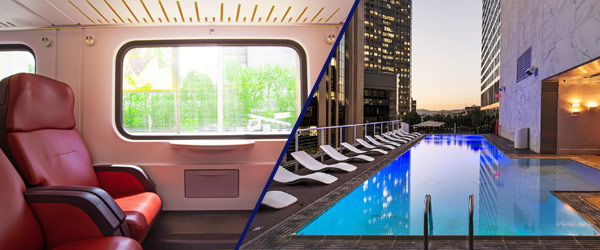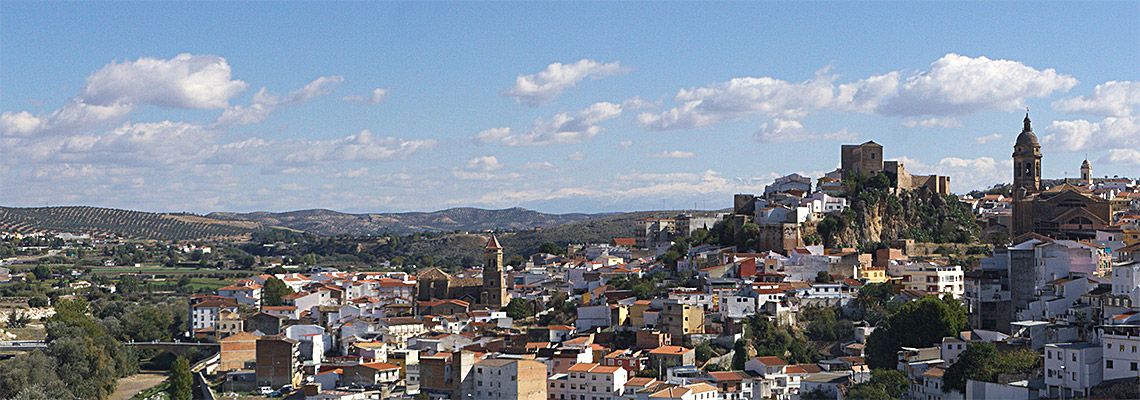
Loja
Loja
THE TOWN
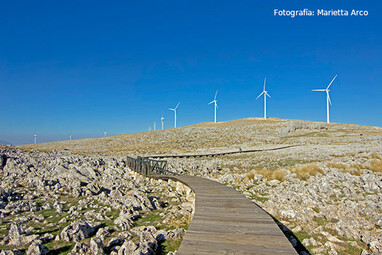
Loja, the town that has historically determined the interior communication between the low and high Andalusia, is the head of its region for its millenary history and fantastic monumental wealth as well as for its number of inhabitants and the great territorial extension of its municipality.
Loja is located in the narrow valley formed by the river Genil as it flows between the mountain range of Sierra Gorda and the hill called El Hacho. This town preserves abundant archaeological remains from the Bronze Age and the Muslim period, including the remains of its medieval citadel and the fortified enclosure that surrounded its old Arab-Andalusian medina.
This town was “the door and the key of the kingdom of Granada” for the Catholic Kings. The Arab name of Loja, Medina Lauxa (“the guardian town”), refers to its enormous strategic importance and its significant military role played during the Christian conquest of the kingdom of Granada. The heraldic shield that Ferdinand the Catholic gave to the town reflects the esteem that he and Isabella the Catholic felt for it when the town fell in 1486 after several days of siege: a golden castle on a golden bridge with the inscription "Loxa, flower among thorns".
Loja treasures numerous tourist attractions. Apart from its historical and monumental heritage, the mountain range called Sierra de Loja offers many routes through wild and surprising landscapes, like the wetland called Charco del Negro. Moreover, it offers the possibility of practising speleology thanks to its large number of cavities, fractures and vertical caves. Its vicinity also provides ideal conditions for the practice of free flight at the Loja Free Flight Station.
For more information, please visit: www.lojaturismo.com
MAIN SIGHTS
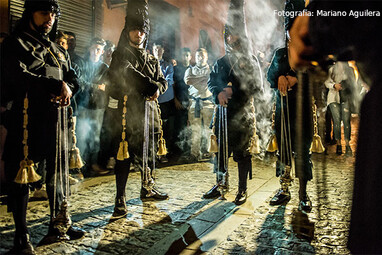
Its origins are diffuse and sometimes lie between leyend and reality. The frenzied imagination of Brother Juan Seco placed its remote foundation after the Great Flood, when Tubal, a direct descendant of Noah, named it in the same way as his favorite daughter, Alfeia.
However, beyond the myth and fiction, the origins of Loja go back to Paleolithic times. From then until today, it has not ceased to be an enclave desired by the Iberians, the Imperial Rome, the first barbarians, the Muslims, etc.
In order to take a walk through its history, it is necessary to mention the megalithic complex of Sierra Martilla, an archaeological site (near the towns called Las Rozuelas and Ventorros de San José) that offers the most spectacular example of prehistoric architecture in Loja (2800/1900 BC).
After the Visigoths, of which some archaeological and epigraphic evidence has been preserved in different parts of the town, the Muslim invasion took place.
The complex of the Alcazaba --the Tower of Homage, the cistern, the parade ground and a walled enclosure reinforced with about twenty towers (some of which are still standing)-- constitutes the main monumental site derived from that period. Besides, Loja has numerous watchtowers (for surveillance) and farmhouse towers (refuge for the rural population). This is the final testimony of the last frontier of Al-Andalus.
After the conquest of the Catholic Kings, Loja was structured in parishes. Its most significant temples are : the Encarnación Church (former collegiate church), which holds treasures of great value ; the San Gabriel Church, a Renaissance temple designed by Juan de Maeda ; and the Santa Catalina Church, as well as the Santa Clara Convent and the Jesús Nazareno Hermitage, both in the Baroque style.
In Loja, the 19th century is going to be characterized by the constructive initiatives of the Narváez family, who will enrich the town with the construction of some buildings like the Narváez Palace (today’s Town Council), the Chapel-Mausoleum of the General Narváez and the Garden of Narváez (his rural residence), in the surroundings of the town.
Regarding culture, Loja’s Holy Week is a must. It is one of its most ancestral and deep-rooted festivities. It is the oldest Holy Week in the province of Granada and it has been declared of National Tourist Interest. One of its main particularities is the figure of "Los Incensarios”, whose existence dates back to 1765. They represent some guards who are convinced of Jesus' innocence and pay him homage by burning incense.
For more information, please visit: www.lojaturismo.com
DISPLACEMENTS
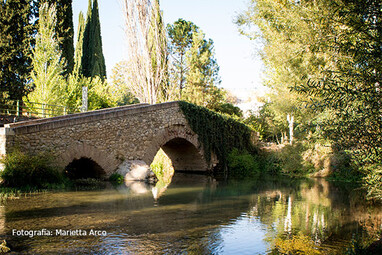
Loja is located in the kilometre 192 of the A-92, the main motorway that allows communication in Andalusia and through which most of the displacements within the autonomous community are carried out. Thanks to this location, even from the capitals of the provinces furthest away from Loja, it takes less than three hours to reach the town. Furthermore, the proximity of the international airports of Granada and Málaga, which are 20 and 40 minutes away respectively, is something very remarkable.
Loja's train station is barely 2 kilometers from the historic centre and the town bus line makes access much easier for travelers.
In addition to that, there are buses that arrive and depart to all the cities of Spain either directly or through transfers. The frequency is one bus every hour aproximately.
For more information, please visit: www.lojaturismo.com
OTHER OPTIONS

Located in the narrow valley formed by the river Genil as it flows between the mountain range called Sierra de Loja and the hill called El Hacho, Loja has seen how its environmental heritage has become one of its greatest tourist attractions. In its environment, water plays a major role. The limestone rock causes water to seep into the Sierra de Loja, forming numerous springs and more than 100 fountains in the municipality. All these springs and fountains make up the Water Route. Furthermore, Loja is known as “Loja, the town of water” thanks to its natural sites declared Natural Monuments, such us:
Riofrío, located next to the A-92, is a town that belongs to Loja. It has a great environmental and gastronomic value. Two rivers flow through this town: Riofrío (from which it takes its name) and Salado. The route to the source of the river Riofrío deserves a special attention because it shows incredible nature with 18th century mills. Regarding gastronomy, trout is one of its main delicacies. It is possible to taste it in any of its many restaurants or simply see it in the closed areas of the river. Other very characteristic dishes are the sturgeon and, for gourmets, the caviar with the Riofrío Designation of Origin (considered the best caviar in the world in 2005).
And Los Infiernos, a picturesque location with waterfalls, where the river Genil has formed a great precipice in the limestone soil, where the Manzanil stream falls after the irrigation of the fertile plain, forming the Cola del Caballo, an admirable waterfall in which the water reaches a height of 9 metres.
Therefore, Loja has the Water Interpretation Centre, a museum dedicated to the importance of water in the town.
To its unquestionable environmental value, it is necessary to add its suitability as a setting for all kinds of active tourism activities, from hiking and climbing to sport fishing and free flight (activity in which Loja has become an international reference).
For more information, please visit: www.lojaturismo.com
LOCAL CUISINE
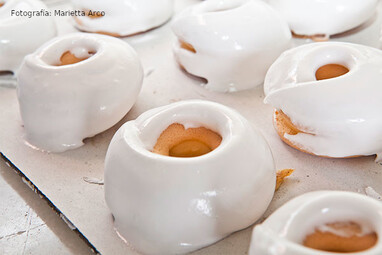
In Loja, there is an exquisite local cuisine, a delight for residents and visitors, which includes meat, fish, vegetables or delicious desserts.
This town offers a great variety of bars and restaurants in which to taste its more typical dishes, either having lunch or dinner, or eating tapas, something very popular here because tapas are served for free with the drink. Another highlight is the “Ruta de la tapa”, a gastronomic route held during a weekend in March or April where bars compete to prepare the most delicious and original tapa. For their part, the participants in this route have only one objective : to be the first to seal the card that certifies that they have been in all the bars and tasted all the tapas in order to participate in the raffle that takes place every year.
The internationally known lamb from Loja is a delicacy that can be prepared in many ways, although the most popular one is the “Cuchifrito de chivo”, where the meat is mixed with the exquisite taste of the local products. However, Loja is not only famous for its meat. In 2005, the caviar from Riofrío was recognised as the best caviar in the world. Other dishes that also stand out are: “Trucha a la brasa” (broiled trout) and “Esturión al fino” (sturgeon cooked with fine Andalusian wine). To all this wide gastronomic offer, it is necessary to add dishes such as gazpacho, the “Gazpachuelo” (a soupe with mayonnaise) or the “Remojón” (a salad with potatoes and orange).
Finally, another must as far as local cuisine is concerned is the “Rosco de Loja” (a delicious doughnut with a sponge base to which a soft meringue is attached), as well as the “Dulces de gloria” (a cake made of marzipan and spaghetti squash jam) and the pastries from the traditional local bakery called Santa Teresa.
For more information, please visit: www.lojaturismo.com
MUSTS
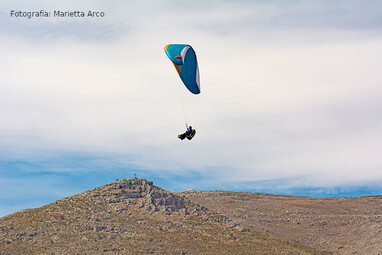
In Loja, it is essential to feel. For that reason, you cannot leave without seeing a dawn from its fantastic viewpoints, without walking through its streets full of stories and memories of its most distinguished historical characters, without losing yourself in its natural landscapes full of life and beauty and, if you're more adventurous, you cannot leave without flying over Loja thanks to the Free Flight Station.
Take a little piece of its culture , festivities and its Holy Week (the oldest one in the province of Granada), an anthropological event where a lot of customs and values rooted in time are revealed, an event promoted by the tenacity of its inhabitants who, year after year, keep the customs of their ancestors alive.
Do not leave this amazing town without trying its water, its caviar, its lamb and its “Roscos de Loja” in order to leave with a good taste in your mouth.
For more information, please visit: www.lojaturismo.com








